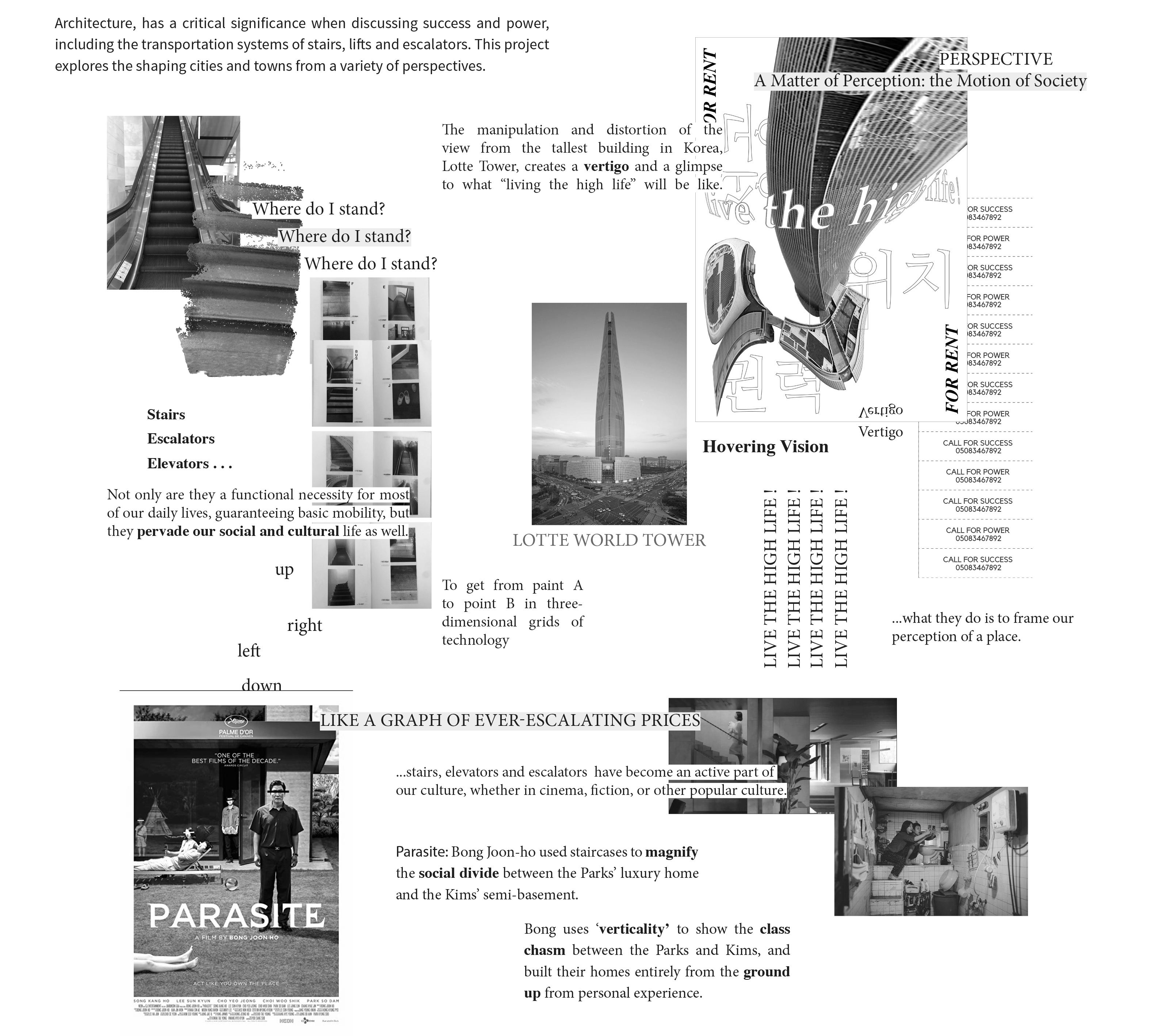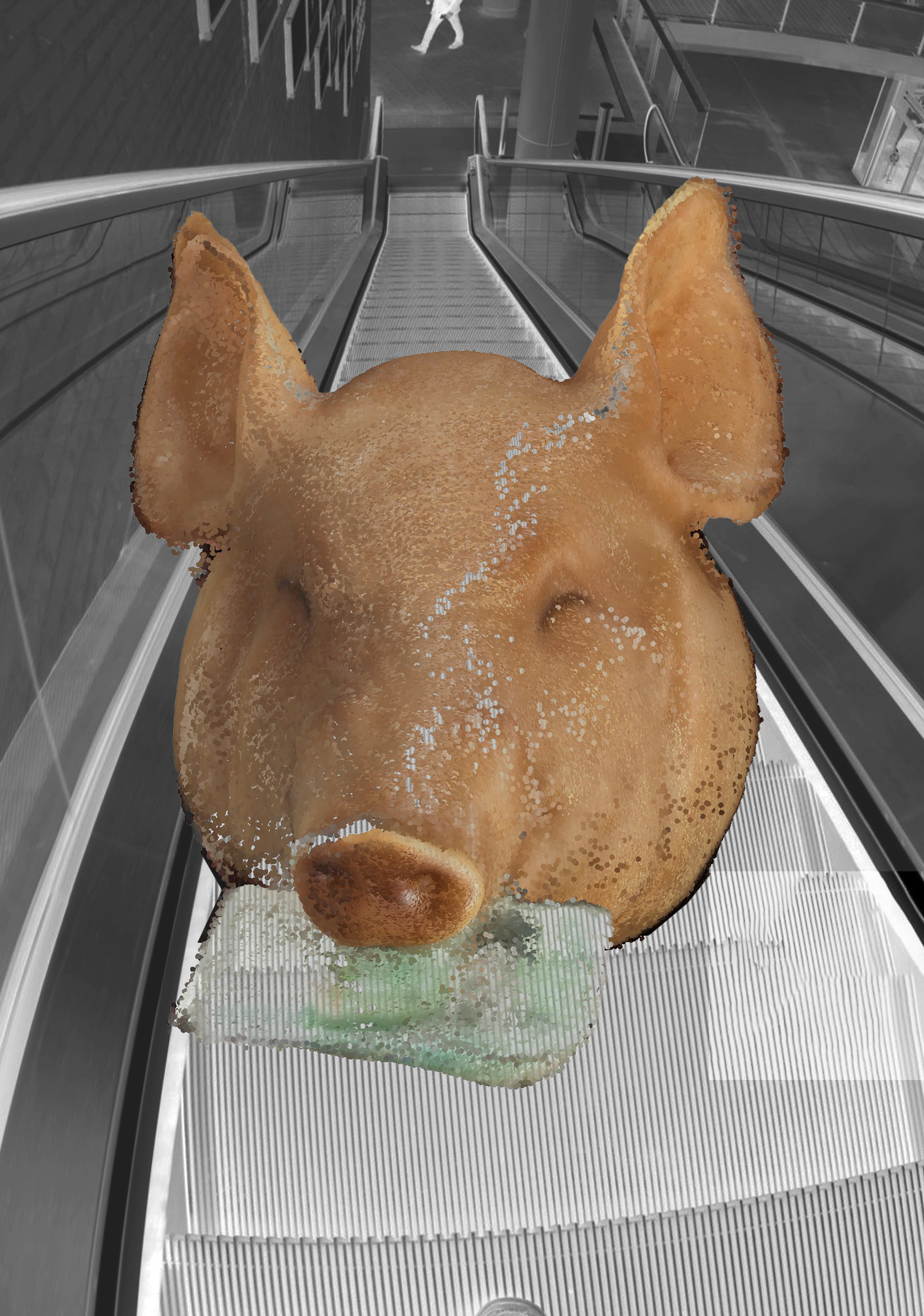





LIVE THE HIGH LIFE!, 2019
Seoul, South Korea
Korean social standards are very much deep rooted in history and tradition; values which still exist in contemporary Korean society. Underneath the rapid economic and architectural developments lies the growing polarisation of its modern society - one which can be traced back to Korean traditional social standards. The emphasis on power distance and hierarchy is still reflected in the maintenance of language and etiquette.
Where do I stand? A Data Collection Collage of my journey of stairs. This research project initially started with the discussion in relation to architectural height and power. I questioned where my ground was and at what height I was living at, and how this correlated to our understanding of power and success in society.
Over a two month period, I documented my vertical movements up and down stairs, escalators and lifts, creating a three dimensional web of my daily activities and calculating at which + or - number of steps I was living.
In further exploring the concept of height and power, I took such social structures into context to encapsulate the main concept through a series of moving images.
The 3D objects rotating in the centre of the three moving backgrounds convey the traditional symbols of success and power in the Korea. I experimented with 3D scanning and digital documentations of these traditions and mythologies that have been around for centuries.
The Pig Head represents money and fertility in Korean culture. In association with the Chinese character of Pig, Don (豚), it shares the same pronounciation with money (돈) in Korean. It forms the core of Gosa (고사), a shamanistic ritual intended to prevent misfortune and bring good luck and cash is stuck into the mouth and ears to herald future financial success. However, the meaning shifts in other cultures; the Pig’s head is used in western literature to symbolise depravity and evil, and is used to allude to the corruption and power struggles of those who hold great wealth and power.
“금수저”, literally translating to ‘gold spoon’ in Korean, is synonymous with inherited wealth and status, which runs parallel with the idiom ‘to be born with a silver spoon in your mouth’. A term that has propped up in modern Korean society, alludes to the rising inequality gaps, which persists especially with the existence of chaebols and its ownership inheritance system.
Contemporary Korean society is also seen in traditional Korean society. The Joseon Dynasty (1392-1897) also divided society into classes; with the high society class being named “yangban”. Yangbans were identifiable by a traditional hat they wore at all times - the Gat (갓)- with the height and shape of the hat defining a person’s social status. Although most were usually born into the wealth, people would buy these hats to reach this level of authority and show off their wealth, wanting to “elevate” themselves into a higher social status to reap the benefits society gave them.
The three different backgrounds: upward moving escalator looking down; scene inside lift; and people walking up stairs - each convey a different mode of transport moving upwards and discuss the efforts in which people take to reach their ideal in society.